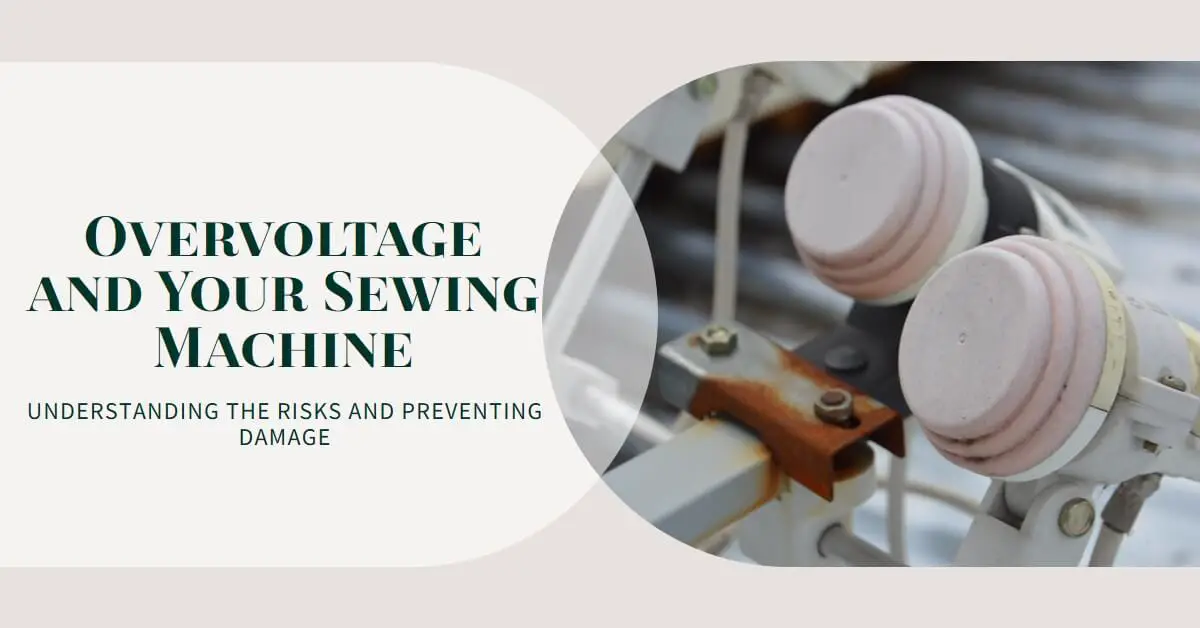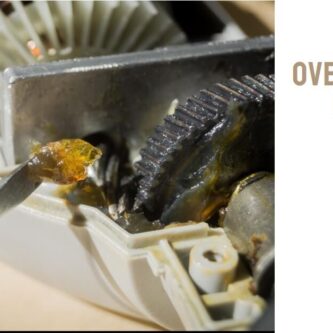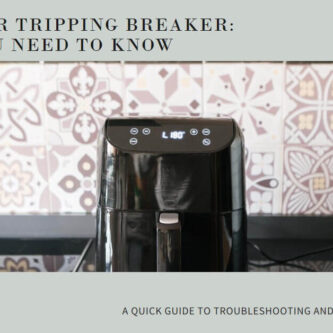Image: “Article Feature Image” by Bing is licensed under CC BY-NC-SA 4.0. Source: Bing Graphic Art. License: CC BY-NC-SA 4.0.
Sewing machines are essential tools for crafting and garment production. They rely on motors to provide the necessary power for smooth and efficient operation.
However, electrical devices like sewing machines are vulnerable to overvoltage, which can potentially damage their motors.
Harnessing Decades of Electrical Expertise: With over a decade of experience as an electrical engineer, I confidently affirm that, overvoltage has the potential to cause damage to the motor of a sewing machine. When the voltage in the power supply exceeds the normal or recommended level, it can lead to adverse effects on the internal components of the motor.
In this article, we will explore the effects of overvoltage on sewing machine motors, the importance of motor protection, and preventive measures to safeguard your valuable equipment.
Understanding Overvoltage
Overvoltage refers to an electrical condition where the voltage in a power supply exceeds the normal or recommended level.
This can occur due to various factors, such as lightning strikes, power surges, or faulty electrical systems.
Overvoltage can have detrimental effects on electrical devices, including sewing machine motors.
Sewing Machine Motors
The motor is a critical component of a sewing machine, as it drives the mechanism responsible for the machine’s operation.
There are different types of motors used in sewing machines, including servo motors and clutch motors, each with its own set of advantages.
Regardless of the motor type, it is crucial to protect it from overvoltage to ensure optimal performance and longevity.
Can Overvoltage Damage the Motor of a Sewing Machine?
Unfortunately, overvoltage can indeed damage the motor of a sewing machine. When excessive voltage is applied, it can lead to several adverse effects on the motor’s internal components.
Overvoltage can cause an insulation breakdown, resulting in short circuits and overheating. It can also lead to the failure of motor windings and other critical parts, rendering the motor inoperable.
Recognizing the signs of motor damage due to overvoltage is essential. Common symptoms include abnormal noise, burning smells, reduced motor speed, or complete motor failure.
If you experience any of these issues, it is crucial to address them promptly to prevent further damage.
Unlock the Secrets: Dive into my comprehensive article What Causes Motor Smoke?
Mechanisms of Overvoltage Protection
To protect sewing machine motors from overvoltage, various mechanisms can be employed. Surge protectors, for example, divert excess voltage away from the equipment, shielding it from potential damage.
Voltage regulators are another effective solution that ensures a stable voltage supply to the motor, preventing sudden spikes.
Additionally, employing an uninterruptible power supply (UPS) can safeguard against both overvoltage and power outages, providing a reliable power source.
Preventive Measures
Taking proactive steps to prevent overvoltage can save you from potential motor damage. Regular maintenance of sewing machines is crucial, including cleaning, lubrication, and inspection of electrical connections.
Ensuring proper grounding of electrical systems can also help mitigate the risk of overvoltage. Additionally, considering voltage stabilization techniques, such as using voltage stabilizers or automatic voltage regulators, can provide added protection.
Troubleshooting Overvoltage Issues
If you suspect overvoltage issues in your electrical supply, there are steps you can take to address the situation.
Firstly, check for any visible signs of power surges or irregularities in the electrical system. If the problem persists, consider contacting a qualified electrician to perform a thorough inspection and identify the source of the overvoltage.
Professional assistance can help in implementing the necessary measures to protect your sewing machine and other electrical devices.
Conclusion
In conclusion, overvoltage poses a significant risk to sewing machine motors. The damaging effects of overvoltage can lead to motor failure and disruption in sewing operations.
Protecting your sewing machine from overvoltage is essential to ensure its longevity and reliable performance.
By understanding the impact of overvoltage, implementing protective mechanisms, and taking preventive measures, you can safeguard your valuable equipment and enjoy uninterrupted sewing operations for years to come.
you work With Electricity! Don’t leave empty-handed!
Looking to stay ahead of the game in the world of electrical engineering? Subscribe to my YouTube channel and gain access to exclusive content you won’t find anywhere else!
The staff I recommend (Amazon Affiliate Links to products I believe are high quality):
- Economy 120 Volt/60Hz AC Power Source – Step-Down Voltage & Frequency Converters 1800W
- UNI-T Digital Multimeter Tester UT139C
- 50-Amp Extension Cord for RV “100ft”
- Voltage Stabilizer 110/220v
- Hair Dryer “best selling“
- TOSHIBA EM131A5C-BS Countertop Microwave Ovens
Disclaimer: This contains affiliate links to Amazon products. I may earn a commission for purchases made through these links.




